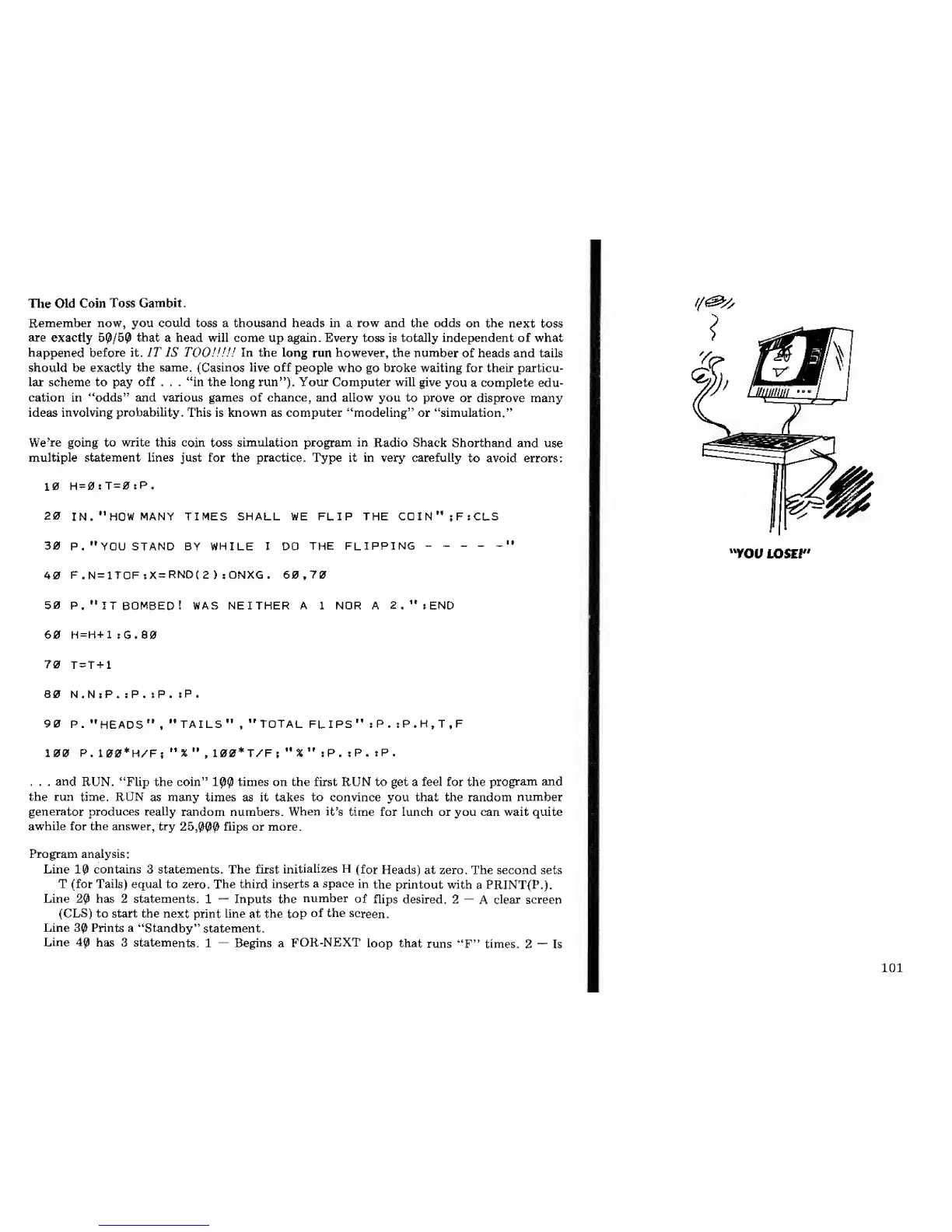The
Old Coin Toss
Gambit.
Remember now, you
could
toss a thousand heads in a row and the odds
on the next
toss
are
exactly
50/50
that
a head will come up again. Every toss is totally independent of what
happened
before it, IT IS
TOO!!!!!
In the long
run
however, the number
of heads and tails
should
be
exactly the
same.
{Casinos live
off
people
who go broke waiting for their particu-
lar scheme to pay off . . . "in the long run"). Your Computer will give
you a complete edu-
cation in "odds" and various games of chance, and allow you
to prove
or disprove many
ideas
involving
probability.
This is known as computer "modeling" or "simulation."
We're
going
to
write this
coin toss simulation program
in
Radio
Shack
Shorthand and
use
multiple statement lines just for the practice. Type it in very carefully
to avoid errors:
10
H=0tT=0:P.
20
IN.
"HOW
MANY TIMES SHALL WE FLIP THE COIN";F:CLS
30
P. "YOU STAND BY WHILE I DO
THE FLIPPING
------
40
F.N=1T0F:X=RND(2
)
jONXG.
60,70
50 P. "IT
BOMBED!
WAS NEITHER A 1 NOR A
2
.
"
\ END
60 H=H+1 sG. 80
70
T=T+1
80 N,N jP. :P . sP .
iP.
90
P.
"HEADS
TAILS
TOTAL
FLIPS'
P.
tP.H.T.F
100 P.
100*H/F;
"
%
"
,
100*T/F
s
:P. :P,
. . .
and
RUN. "Flip the coin"
100
times on the first RUN to get a feel for the
program and
the run
time. RUN
as
many
times as it
takes
to convince you that the random
number
generator
produces
really
random numbers.
When
it's
time for lunch or you can wait quite
awhile for the answer,
try
25,000
flips or more.
Program analysis:
Line
10
contains 3 statements. The first
initializes H
(for
Heads) at zero. The second sets
T (for Tails) equal to zero. The third inserts
a space
in
the printout with a
PRINT(P.).
Line
20
has 2 statements.
1
—
Inputs
the
number
of
flips desired.
2
—
A
clear
screen
(CLS)
to start the next print line
at
the
top
of the
screen.
Line
30
Prints a
"Standby"
statement.
Line
40
has
3
statements.
1
—
Begins a
FOR-NEXT
loop that
runs "F" times. 2
—
Is
"VOU IOSH"
101

